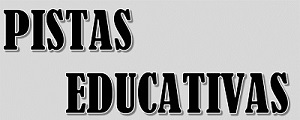SISTEMA AUTÓNOMO DE ATERRIZAJE PARA MICRO VEHÍCULOS AÉREOS BASADO EN YOLOV8 (YOLOV8 BASED AUTONOMOUS LANDING SYSTEM FOR MICRO AERIAL VEHICLES)
Resumen
La navegación autónoma de micro vehículos aéreos (MAVs) con sensores visuales ha ganado relevancia, particularmente en la etapa de aterrizaje, donde los sensores de ubicación tradicionales pueden fallar. El uso de aprendizaje profundo y visión computacional permite superar estas limitaciones, pues las cámaras brindan más información del entorno, especialmente al aterrizar en plataformas en movimiento. En este trabajo, se utiliza el detector You Only Look Once versión 8 (YOLOv8) para identificar un marcador de aterrizaje tipo Quick Response (QR). Se entrena un Perceptrón Multicapa (MLP) para estimar la altura relativa entre el MAV-plataforma móvil. Un controlador Proporcional-Integral (PI) calcula y envía los comandos de control al MAV para aterrizar, utilizando Robot Operating System (ROS) como interfaz. Se utilizó un dron Tello para probar el sistema, logrando una tasa de aterrizajes exitosos del 90% con una precisión de detección del 97%, demostrando que YOLOv8 es un componente clave.
Palabras Clave: Autónomo, Aterrizaje, MAV, MLP, YOLOv8.
Abstract
Autonomous navigation of micro aerial vehicles (MAVs) using visual sensors has gained relevance, particularly during the landing phase, where traditional positioning sensors may fail. The use of deep learning and computer vision helps overcome these limitations, as cameras provide more environmental information, especially when landing on moving platforms. In this work, the You Only Look Once version 8 (YOLOv8) detector is used to identify a Quick Response (QR) landing marker. A Multilayer Perceptron (MLP) is trained to estimate the relative height between the MAV and the moving platform. A Proportional-Integral (PI) controller calculates and sends control commands to the MAV for landing, using Robot Operating System (ROS) as an interface. A Tello drone was used to test the system, achieving a 90% successful landing rate with a detection accuracy of 97%, demonstrating that YOLOv8 is a key component.
Keywords: Autonomous, Landing, MAV, MLP, YOLOv8.
Texto completo:
747-769 PDFReferencias
Adarsh, P., Rathi, P., Kumar, M. YOLO v3-Tiny: Object Detection and Recognition Using One-Stage Improved Model. 6th International Conference on Advanced Computing and Communication Systems (ICACCS), 687-694. 2020.
Balbuena-Palma, J. A. ROS-Tello Driver. https://github.com /JoseBalbuena181096/catkin_ws_ROS_TELLO. Enero 2024.
Buckland, M., Gey, F. The Relationship Between Recall and Precision. Journal of the American Society for Information Science, vol. 45, no. 1, pp. 12-19, Wiley Online Library. 1994.
Bernardeschi, C., Fagiolini, A., Palmieri, M., Scrima, G., Sofia, F. ROS/Gazebo-Based Simulation of Cooperative UAVs. International Conference on Modelling and Simulation for Autonomous Systems, 321-334, Springer. 2018.
Bhujbal, K., Barahate, S. Custom Object Detection Based on Regional Convolutional Neural Network & YOLOv3 With DJI Tello Programmable Drone. 7th International Conference on Innovation & Research in Technology & Engineering (ICIRTE). 2022.
Cañas, E. QRDet. https://github.com/Eric-Canas/qrdet. Septiembre 2023.
Cabrera-Ponce, A. A., Martínez-Carranza, J. Onboard CNN-Based Processing for Target Detection and Autonomous Landing for MAVs. Mexican Conference on Pattern Recognition, 195-208, Springer. 2020.
Hall, J., Mohseni, K. Micro Aerial Vehicles. Encyclopedia of Microfluidics and Nanofluidics, 1-10, Springer US, Boston, MA. 2013.
Hussain, M. YOLOv1 to v8: Unveiling Each Variant - A Comprehensive Review of YOLO. IEEE Access, vol. 12, pp. 42816-42833. 2024.
Idrissi, M., Salami, M., Annaz, F. A Review of Quadrotor Unmanned Aerial Vehicles: Applications, Architectural Design, and Control Algorithms. Journal of Intelligent & Robotic Systems, vol. 104, no. 2, pp. 1-33, Springer. 2022.
Joseph, L. Robot Operating System (ROS) for Absolute Beginners. Springer. 2018.
Lin, S., Jin, L., Chen, Z. Real-Time Monocular Vision System for UAV Autonomous Landing in Outdoor Low-Illumination Environments. Sensors, vol. 21, no. 18, p. 6226, MDPI. 2021.
Loy, J. Neural Network Projects with Python: The Ultimate Guide to Using Python to Explore the True Power of Neural Networks Through Six Projects. Packt Publishing Ltd. 2019.
Lu, Y., Xue, Z., Xia, G.-S., Zhang, L. A Survey on Vision-Based UAV Navigation. Geo-Spatial Information Science, vol. 21, no. 1, pp. 21-32, Taylor & Francis. 2018.
Matías-Pacheco, A. D. MAV-Autonomous-Landing-Tello-YOLO-ROS. https://github.com/ADanielMt/MAV-Autonomous-Landing-Tello-YOLO-ROS. Agosto 2024.
Narayanan, R. G. L., Ibe, O. C. Joint Network for Disaster Relief and Search and Rescue Network Operations. Wireless Public Safety Networks 1, pp. 163-193, Elsevier. 2015.
Nguyen, P. H., Arsalan, M., Koo, J. H., Naqvi, R. A., Truong, N. Q., Park, K. R. LightDenseYOLO: A Fast and Accurate Marker Tracker for Autonomous UAV Landing by Visible Light Camera Sensor on Drone. Sensors, vol. 18, no. 6, p. 1703, MDPI. 2018.
Wang, Y.-G., Shao, H.-H. Optimal Tuning for PI Controller. Automatica, vol. 36, no. 1, pp. 147-152, Elsevier. 2000.
Wu, L., Wang, C., Zhang, P., Wei, C. Deep Reinforcement Learning with Corrective Feedback for Autonomous UAV Landing on a Mobile Platform. Drones, vol. 6, no. 9, p. 238, MDPI. 2022.
Xiao, Y., Tian, Z., Yu, J., Zhang, Y., Liu, S., Du, S., Lan, X. A Review of Object Detection Based on Deep Learning. Multimedia Tools and Applications, vol. 79, pp. 23729-23791, Springer. 2020.
Yu, L., Luo, C., Yu, X., Jiang, X., Yang, E., Luo, C., Ren, P. Deep Learning for Vision-Based Micro Aerial Vehicle Autonomous Landing. International Journal of Micro Air Vehicles, vol. 10, no. 2, pp. 171-185, SAGE Publications Inc. 2018.
URL de la licencia: https://creativecommons.org/licenses/by/3.0/deed.es

 Pistas Educativas está bajo la Licencia Creative Commons Atribución 3.0 No portada.
Pistas Educativas está bajo la Licencia Creative Commons Atribución 3.0 No portada. 
TECNOLÓGICO NACIONAL DE MÉXICO / INSTITUTO TECNOLÓGICO DE CELAYA
Antonio García Cubas Pte #600 esq. Av. Tecnológico, Celaya, Gto. México
Tel. 461 61 17575 Ext 5450 y 5146
pistaseducativas@itcelaya.edu.mx
